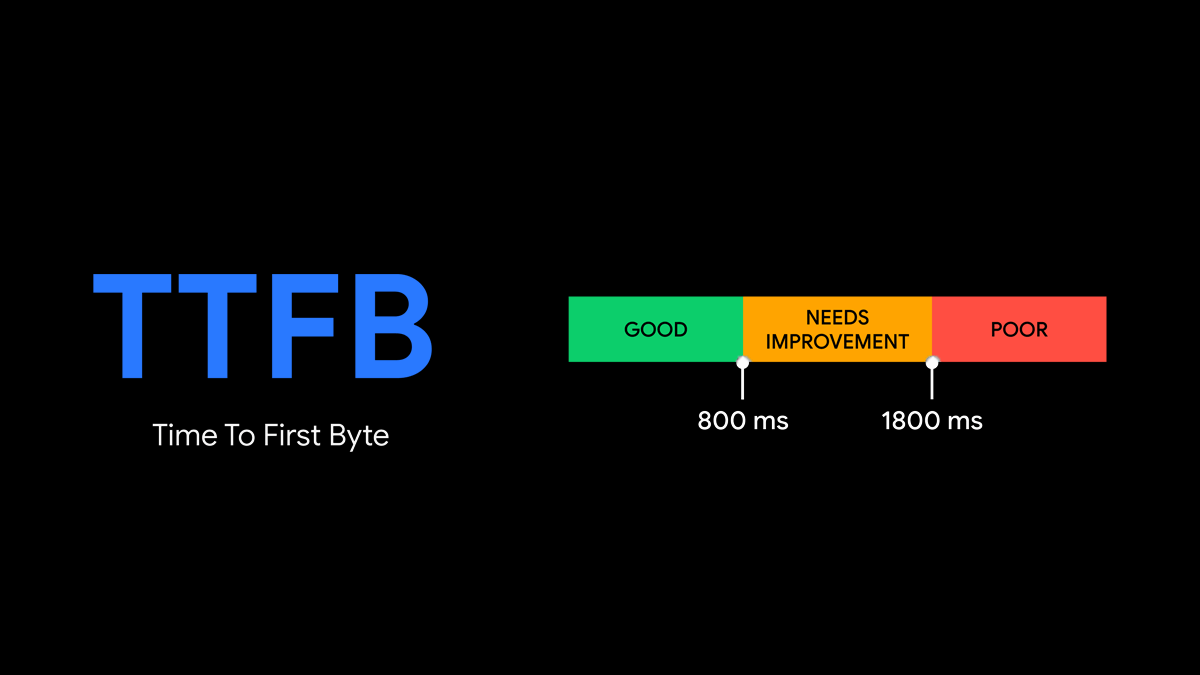TTFB or Time to First Byte is one of most talked Web Performance metrices. It is also controversial because some people believe it is not important at all while others think it is the most critical metric for Web Performance.
We at The Performance Blog believe that TTFB is important but certainly not the only important metric. Today, let's take a deep dive and learn all the details of this metric.
What is TTFB?
Time to First Byte (TTFB) is a key web performance metric that gauges the speed of a web server's response to a request. It is usually measured in milliseconds.
It's the duration from when a user's browser sends a request to a server until it receives the first byte of data.
TTFB = responseStart - navigationStart
TTFB is crucial because it's the initial interaction in the loading process; a high TTFB means the rest of the page can't start loading, leading to slower page display and hence leading to high FCP and LCP and eventually a poor Web Vitals Score.
This metric is vital for user experience and search engine optimization, as it directly impacts the Core Web Vital known as LCP, a factor considered by Google in its ranking algorithm.
TTFB Scores Interpretation
A good TTFB score is generally considered to be under 800 milliseconds for any Web Application. This is the time it takes for the first byte of data to be received after a request is made. However, this can vary depending on the complexity of the site and the distance between the server and the client.

How to Measure
TTFB can be measured through both Synthetic Testing Tools (Lab) or Real-user Testing Tools (Field). Both the methods of measurement are crucial and need to be considered.
Lab Tools
Lab tools are controlled environments that can be used to measure TTFB. These include tools like Google PageSpeed Insights and WebPageTest. They provide a consistent environment for testing, which can be useful for debugging and optimization.
For testing on Multiple Locations at the same time, you can also try KeyCDN Performance Tool and SpeedVitals TTFB Test.
Field Tools
Field tools measure TTFB in real-world conditions. These include tools like Google's Chrome User Experience Report (CrUX) and other Real User Monitoring (RUM) tools. They provide data based on actual user experiences, which can be more representative of real-world performance.
Measure with JavaScript
JavaScript can also be used to measure TTFB. The performance.timing API in JavaScript provides a responseStart attribute, which can be used to calculate TTFB.
Why is TTFB Important?
TTFB is an important metric because it directly impacts user experience. A slow TTFB means users have to wait longer for a page to start loading, which can lead to frustration and potentially cause users to leave the site. As it directly impacts LCP, it also indirecly impacts Google Search Rankings as LCP is a part of Google's Page Experience.
How to Improve TTFB
Here are several strategies to reduce the Time to First Byte (TTFB):
Optimize Server Performance: You can boost your server's performance by either upgrading its resources or fine-tuning its configuration. This can help to cut down the time your server takes to process requests.
Optimize Database Performance: Inefficient database queries can substantially lengthen TTFB. By refining your database structure and queries, you can increase their efficiency and improve TTFB.
Use a Content Delivery Network (CDN): Using a CDN, which stores cached versions of your site on servers globally, can reduce the geographical distance between the server and the client. This results in faster content delivery to users and a quicker TTFB.
Enable Compression: By enabling compression on your server, you can reduce the size of the data that needs to be transmitted, leading to a faster TTFB.
Implement Caching: Implementing server-side caching can decrease the processing load on the server, leading to a better TTFB.
By adopting these techniques, you can significantly reduce your TTFB and substantially enhance the overall performance of your website. Here are some more advanced strategies that you can implement to improve TTFB.
Biggest Culprits of Slow TTFB
The biggest culprits of slow TTFB are often server performance, network issues, and heavy backend processing. This can include things like slow database queries, lack of server resources, or poor server configuration.
Another major culprit is the physical distance of the server from the users of the website. The users that live far away from the server will always experience a high TTFB without a CDN.
To improve TTFB, you can optimize your server configuration, upgrade your server resources, optimize your database queries, and ensure your content is delivered through a Content Delivery Network (CDN) to reduce the distance between the server and the client.
Final Words
In conclusion, TTFB is a crucial metric in web performance and user experience.
By understanding what a good TTFB score is, how to measure it, and how to improve it, you can significantly enhance the performance of your website and the overall user experience.
